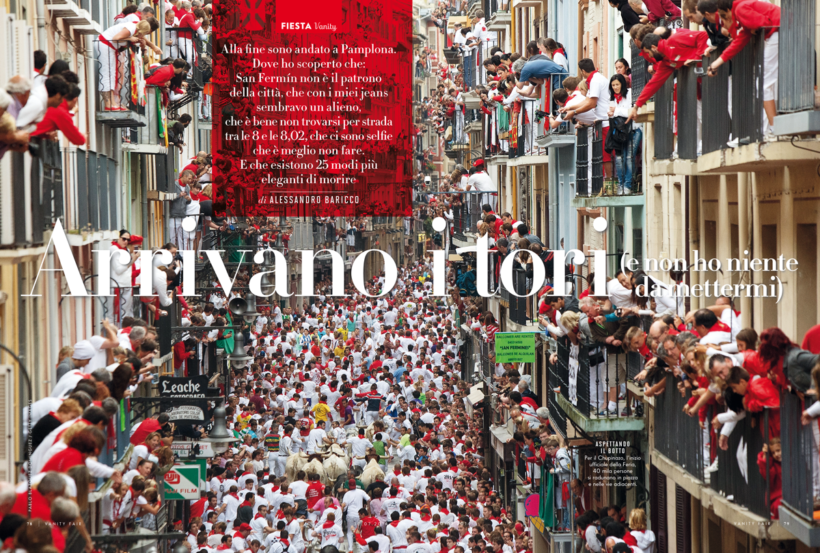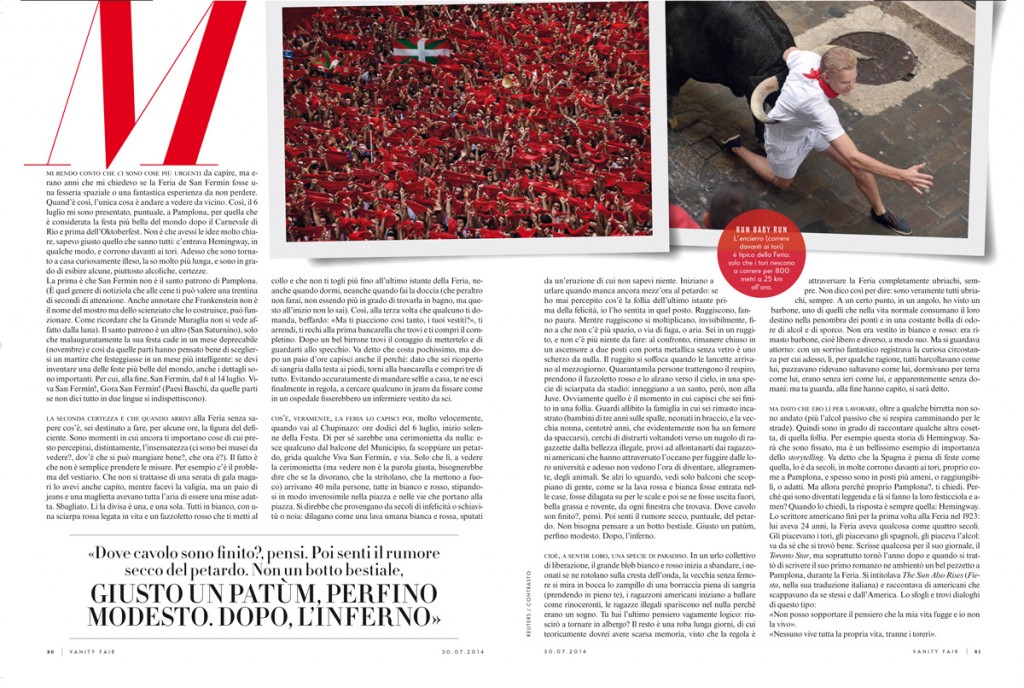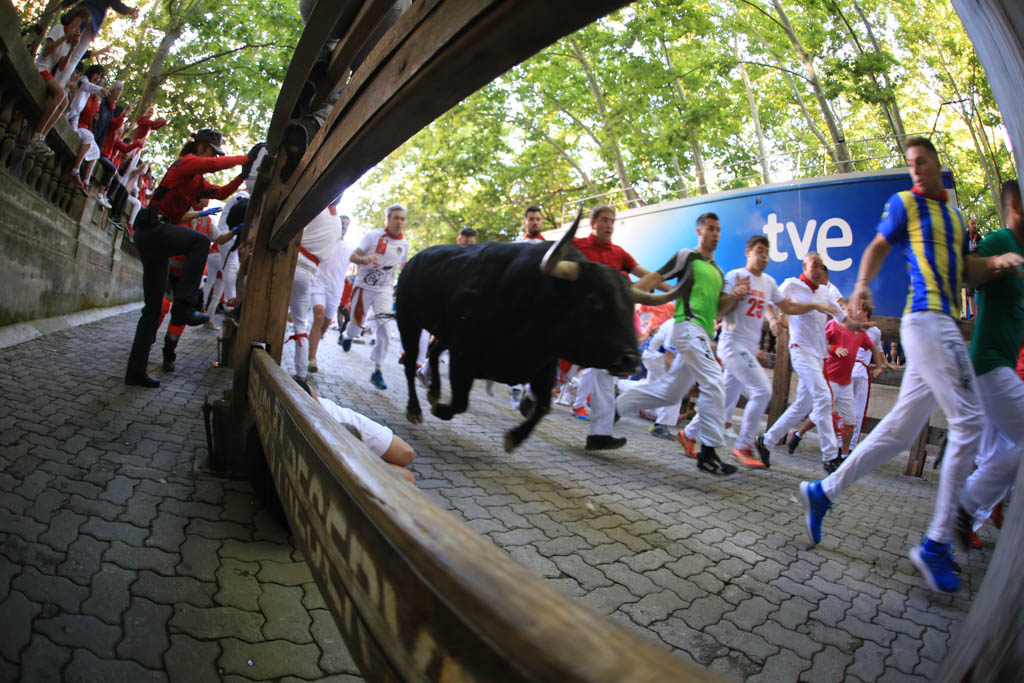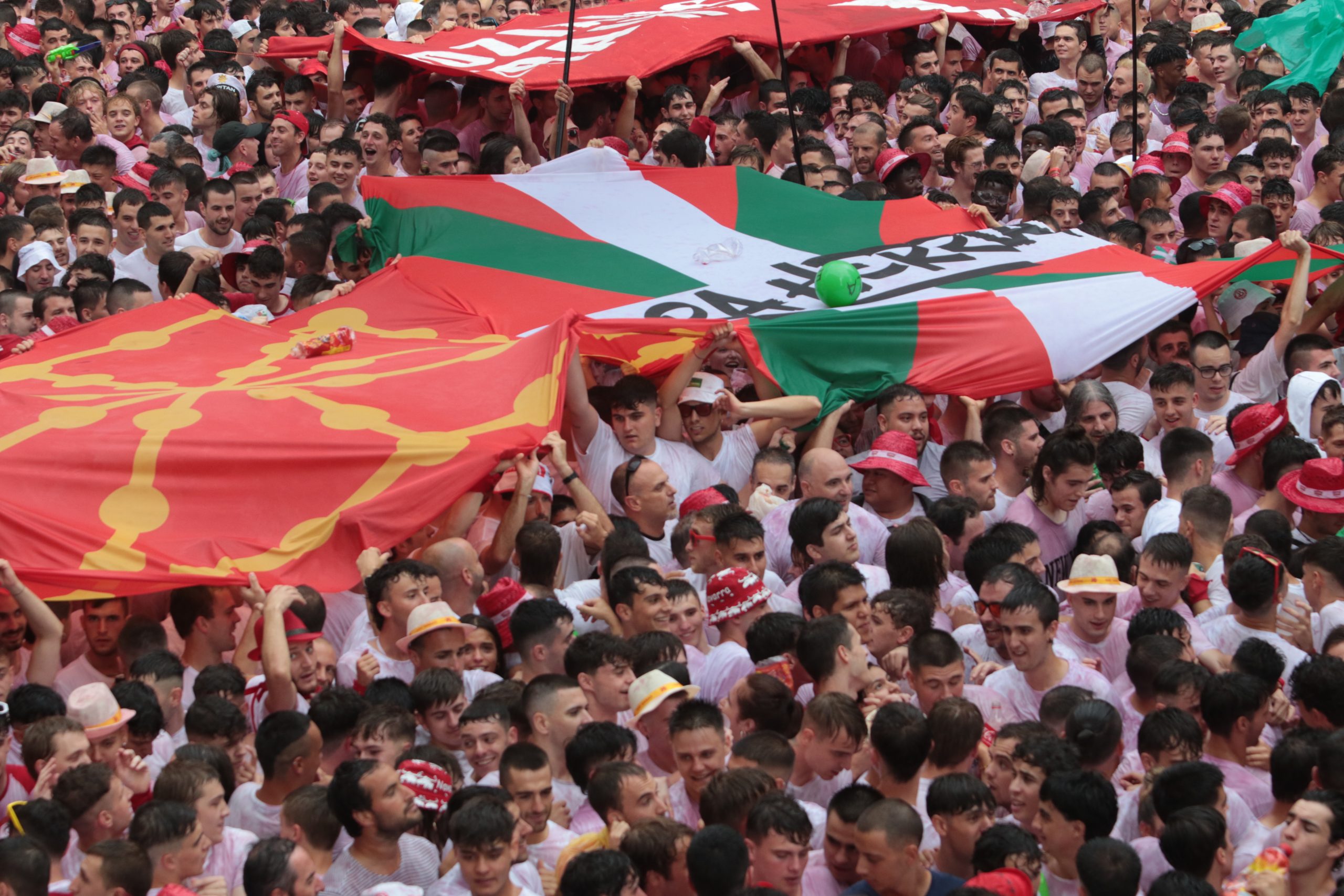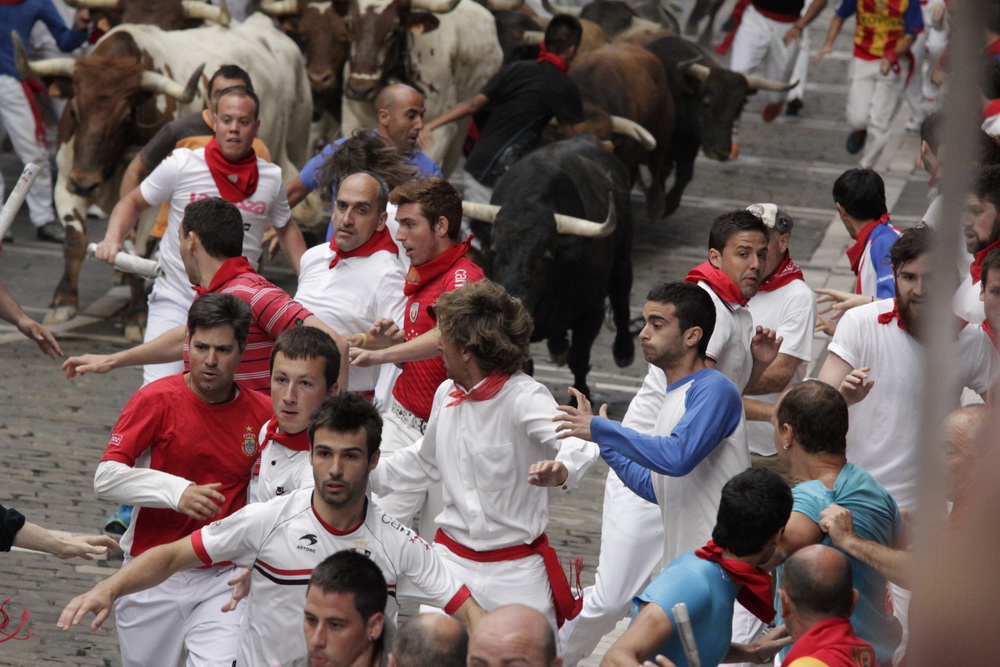One of the best-written views taken of the last Sanfermin fiestas was that of the Italian journalist and writer, Alexandro Baricco, for Vanity Fair Italia. In the paper edition of this magazine published on the 19th of July in Italy, there were four full pages given over to the fiestas of Sanfermin. While the photos were exclusively dedicated to capturing The Running of the Bulls and the Txupinazo, the written text in fact hardly mentions The Running of the Bulls and most of the text deals with the customs that exist for the fiestas in general and more particularly for the opening Txupinazo event.
The headline of the report reads “The Bulls are coming (and I have nothing to put on)” and the subtitle takes us directly into the fiesta scene: “And so I went to Pamplona and I discovered that San Fermín is not the patron of that city and that my jeans made me look like a foreigner. I also discovered that it is not a good idea to be on the streets of the old quarter between 8a.m. and 8.02 a.m. I also learned that there exists a selfie which is better not taken and I discovered one of the 25 most elegant ways of dying.”
This suggestive approach to the fiestas of San Fermín by way of Running of the Bulls indicates an original and distinctive kind of writer. Baricco is recognized worldwide for his literary piece
–Seday- and other works such as City, Emaús or This Story (Consult references here). With the quality shown in his report here he approaches the level of acclaimed writers such as Dos Passos or Hemingway who discovered the greatness of these fiestas through their quality writing.
Alessandro Baricco arrived last 6th of July to Pamplona and he attended the first Running of the Bulls on the morning of the 7th after spending all of the 6th enjoying the opening Txupinazo event which continued into the morning of the 7th and the first bullrunning. We know this because he himself narrates this in his report and we also know that his agency had rented a balcony from one of the Balconies de Sanfermin.com by Locals in Estafeta Street to watch the bullrunning event from there. In his report Baricco tries to resolve the dilemma which he had long held in mind – whether the Sanfermin fiestas were a total nonsense or whether they could really provide a fantastic experience which shouldn’t be missed by anyone. As a novel witness and participant in the whole scene he describes a passionate and intense initiation into the fiestas and mentions some of the norms to aid in getting a total immersion in the fiestas such as dressing up in the traditional all-white gear, for instance.
Baricco also tells us about the great surprise it was for him to discover that San Fermín is not, in fact, the patron saint of the city of Pamplona and develops the idea that having the fiestas in November was not a very wise thing to do and holding them in July was much better. He also asks himself why – given that there are many other places around Spain that hold bullrunnings, and in many cases in prettier places than Pamplona, – why is it that Pamplona has become the world-wide reference for The Running of the Bulls. His answer is clear – it is thanks to the influence of Ernest Hemingway and perhaps to two of his sentences from his novel Fiesta: “ I can’t stand the idea of seeing my life pass by and not do anything to live it to the full” as well as the line “Nobody really lives all his life to the full, except bullfighters.”

